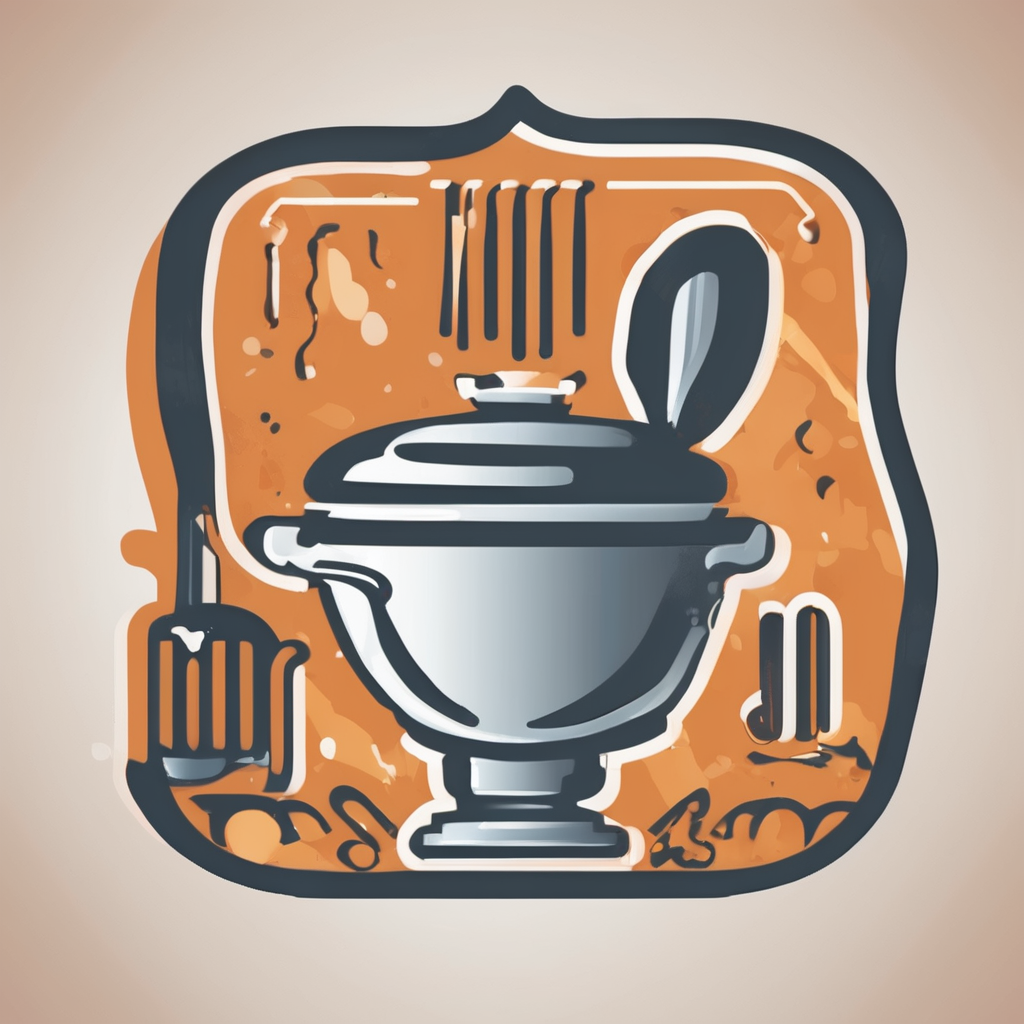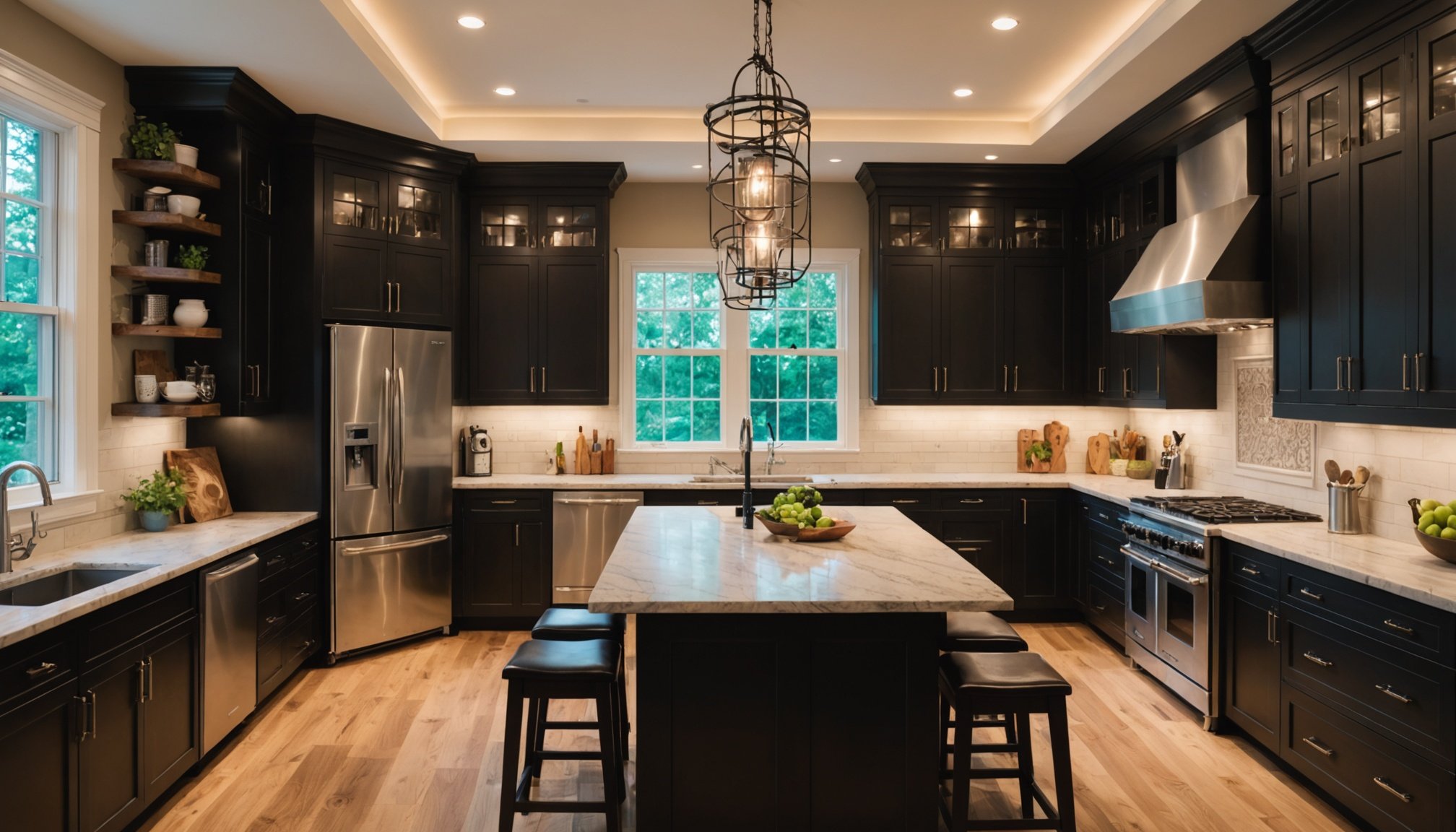Understanding Multi-Zone Kitchen Design
A multi-zone kitchen design is a strategic approach to organizing a kitchen into distinct areas, or zones, each dedicated to specific tasks. This type of kitchen layout is essential for enhancing efficiency, reducing clutter, and optimizing the cooking process.
In a multi-zone kitchen design, clear differentiation of cooking zones plays a pivotal role. By having defined areas, each cooking task can be allocated to a specific zone. This not only helps in streamlining workflow but also minimizes the time spent moving between tasks. For instance, having a separate zone for food preparation, cooking, and cleaning facilitates a seamless transition during meal preparation.
Topic to read : Sipping into the future: latest news from the wine world
Common kitchen zones include:
- Preparation Zone: Where ingredients are washed, chopped, and made ready for cooking.
- Cooking Zone: Centred around the stove or cooktop, designed for the actual cooking process.
- Cleaning Zone: Dedicated to washing dishes and keeping the workspace tidy.
Each of these zones has its own set of functionalities, emphasising the practical benefits of a structured kitchen layout. Allocating dedicated spaces enhances safety by reducing cross-traffic and avoids mishaps in the busy kitchen environment. Such thoughtful planning creates a harmonious cooking experience.
This might interest you : Ultimate guide to preserving your wooden kitchen utensils: proven techniques for lasting durability
Planning Your Multi-Zone Kitchen Layout
Embarking on kitchen planning requires a well-thought-out approach, especially when considering a multi-zone layout. The key is to balance layout strategies and sound design principles. This ensures that your kitchen is both functional and aesthetically pleasing.
Assessing Kitchen Space
Accurate assessment of kitchen space forms the foundation of effective planning. Begin by evaluating the room’s dimensions and shape. Understanding these elements clarifies potential constraints and possibilities. Use techniques like grid paper sketches or digital planning tools to visualize the best use of your available space.
Establishing Zones
A multi-zone kitchen is divided into distinct areas for various tasks, each with its unique purpose. The three main zones include:
- Cooking: Allocate space for stoves, ovens, and microwaves.
- Preparation: Ensure ample counter space and storage for utensils.
- Dining: Position seating away from cooking zones for safety and comfort.
Flow and Accessibility
Ensuring an efficient workflow is crucial for a well-operating kitchen. When establishing zones, consider the importance of accessibility. Paths should be clear to facilitate movement between zones seamlessly. This is vital for maintaining both functionality and safety.
Incorporate daily habits into the kitchen’s design to ensure alignment with your natural workflow, enhancing both usability and enjoyment.
Essential Elements of Each Kitchen Zone
Creating a kitchen layout that maximises functional design can enhance cooking experiences significantly. Each section of the kitchen should be a well-oiled machine, making cooking a delight rather than a chore.
Cooking Zone Essentials
Your cooking zone is the beating heart of your kitchen zones. It should be centrally located to allow easy access to other areas. Essential appliances such as the oven, hob, and microwave should be placed strategically for efficiency. Consider installing pull-out spice racks or hanging racks for pots and pans; this increases accessibility while preserving valuable counter space for prep work.
Preparation Zone Features
A well-equipped preparation zone includes proper lighting, sharp knives, and a sturdy chopping board. Functional design dictates you should have ample countertop space and categorised storage options for utensils and spices. Tray dividers for baking sheets or cutting boards help in keeping the workflow smooth and stress-free.
Dining Zone Considerations
Designing your dining zone is about comfort and functionality. Choose seating arrangements that are adaptable for varying numbers of guests. Incorporate features like foldable tables or extendable dining sets to maximise space and invite flexibility into your dining zone. The focus should be both aesthetic appeal and practical efficiency.
Practical Tips for Zoning Your Kitchen
Creating a functional kitchen has become increasingly essential in modern design. With the right kitchen zoning tips, you can effectively differentiate areas for various tasks without needing physical barriers. One approach is to use visual boundaries such as colour schemes. Bold colours can illuminate specific zones like cooking or dining areas, enhancing focus and defining purpose.
Lighting plays a crucial role in zoning as well. Task lighting over a kitchen island can highlight a prep zone, while softer pendant lights can create a distinct mood over a dining space, effectively separating the areas through visual cues.
Materials also help differentiate zones. Countertops made from contrasting materials can subtly underscore different functionalities, such as granite for the cooking zone and wood for dining. This differentiation not only adds structure but also aesthetic depth.
Incorporating flexible furniture is another ingenious solution. Rolling carts can serve as mobile prep stations, easily adapting to the changing needs of the kitchen. Multitasking furniture like foldable tables or stackable chairs ensures that spaces remain versatile, catering to different activities and gatherings.
Combining these design insights will craft a holistic and agile kitchen environment, making everyday tasks effortless and enjoyable.
Inspiration from Real-Life Multi-Zone Kitchens
Discovering kitchen inspiration from real-life examples can transform your culinary space into a masterpiece of design and functionality. Multi-zone kitchens are especially intriguing due to their seamless blend of different zones for distinct activities. This approach maximises efficiency without sacrificing aesthetic appeal.
Case Studies of Successful Designs
Exploring case studies reveals that successful kitchen designs often balance open spaces and distinct zones. For example, a well-organised multi-zone kitchen might separate cooking, dining, and cleaning areas while maintaining visual cohesion and flow. Case studies illustrate the innovative ways homeowners and designers are crafting kitchens that blend utility and beauty.
Colour and Material Choices
Colour and material selection profoundly impacts a kitchen’s overall aesthetic appeal. Popular choices include neutral palettes enhanced by bold accents, offering a balance of calm and excitement. Incorporating materials like sleek stainless steel alongside warm timber can create a compelling contrast, while durable quartz countertops offer both practicality and elegance.
Innovative Layouts
Innovative layouts are at the heart of successful multi-zone kitchens. Designers often utilise island units to anchor a space, serving as a central hub for various tasks. Creative use of shelving and cabinetry can also enhance the kitchen’s functionality without compromising its visual charm. This ingenuity leads to spaces that are as welcoming as they are efficient.
Expert Insights and Resources
Delving into a multi-zone kitchen design requires insights from seasoned professionals who deeply understand industry trends. An interview with renowned designer Jane Smith offers valuable expert advice. Jane emphasises the importance of seamless flow and accessibility, advocating for practical spaces over purely aesthetic choices. She suggests incorporating flexible storage solutions, which can adapt to changing needs.
Kitchen design resources play a crucial role in effective planning. Jane recommends leveraging digital tools like SketchUp or Home Designer Suite, which allow users to visualise and modify their kitchen layout in real time. With these applications, homeowners can test various configurations and settle on a design that optimally utilises their space.
When it comes to industry trends, multi-zone kitchens are at the forefront of functionality. Designers are moving towards creating distinct areas for cooking, cleaning, and socialising. This shift is largely driven by the demand for versatile spaces that cater to a modern lifestyle. Incorporating islands with seating, smart appliances, and concealed storage are all part of this evolutionary trend. When asked about future developments, Jane predicts a continued focus on eco-friendly materials and technology integration, ensuring sustainability and convenience.











